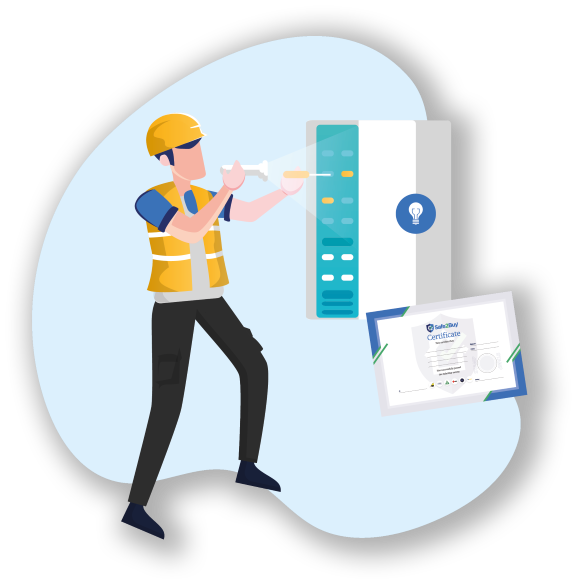Electrical Installation Condition Report
Old and faulty electrical wiring poses a very real risk of fire. That’s why it’s crucial to have the condition of your electrical installation, and electrical accessories, checked in accordance with the laws and regulations in place.
As a homeowner there’s no legal requirement for you to obtain an EICR unless you’ve had what are termed ‘notifiable’ electrical works undertaken at your home since 2005. This might include having your home rewired, having additional lighting fitted, or having telephone cabling installed.
However, it’s worth bearing in mind that if you’re planning to sell your property, or you’re looking to invest, an EICR may well provide the confidence you or your buyers need.

What is an electrical installation condition report?
The Electrical Installation Condition Report is a formal document that details the condition of the electrical installation within your property. It’s purpose is to confirm whether or not it’s safe for you, or anyone else for that matter, to use.
The report covers all aspects of your fixed electrical installation (including any electrical accessories), including:
✔️ Fuse boxes (also known as consumer units).
✔️ Lighting (including light switches).
✔️ Plug sockets.
All in order to make sure that they’re properly installed, maintained and most importantly – safe.
The report will also confirm the date that the electrical safety test took place, and when the next one is due to take place, which is helpful for keeping your safety and compliance on time and on point.
The EICR has five aims:
The EICR ensures that your electrical installation isn’t damaged or suffering from any signs of wear and tear.
The electrician carrying our the report will recommend whether any remedial works need to be carried out due to wear and tear.
To ensure that the electrical installation meets the IET (Institution of Engineering and Technology) Wiring Regulations. You can find more at the NRLA here.
To highlight any electrical appliances likely to cause harm. The EICR will identify any appliance that poses a risk of fire or electrical shock, and recommend whether an appliance should be repaired or replaced.
Document the condition of the electrical installation If you’re a landlord, this will be very helpful in the event of an accident, as it will demonstrate that you’ve taken the necessary steps to keep your property and tenants safe
Electrical safety – your duty as a landlord
On the 1st June 2020, the Electrical Safety Standards in the Private Rented Sector (England) Regulations came into force, and they apply to any tenancy created on or after that date. This means that as a landlord, you’ll be required to have an satisfactory electrical safety certificate carried out on any property you decide to let to your tenants.
The Regulations serve as a very good example of the ever-changing requirements in the private rental sector, and to ensure compliance you’ll need to:
✔️ Have the electrical installation in your rental properties inspected at least once every five years.
✔️ Ensure that the electrician carrying out the inspection is both competent and qualified.
✔️ Obtain a copy of the EICR from the electrician who carried out the electrical safety inspection.
✔️ Provide a copy of the EICR to your tenants within 28 days. If your tenant is new, they must be given a copy of the report to them before they move into the property.
✔️ Keep your EICR safe and secure so that you can give it to the electrician who carries out your next electrical safety inspection when it’s due.
What to do when your EICR recommends further investigation or remedial work
Sometimes, an electrical safety inspection will identify an area of concern. A damage or defect that needs to be rectified because it poses a risk to your tenants. If that’s the case, you’re required to have remedial worlds undertaken within 28 days of being told by your electrician that they’re required.
Once the works have been carried out, you’ll need a qualified electrician to provide you with an satisfactory EICR Certificate of Safety, to confirm that the electrical installation within your property is safe. As well as having the remedial work undertaken, you’ll also need to provide a copy of the certificate and confirmation of the action taken to your tenants within 28 days.


Electrical Safety Testing – going the extra mile
The EICR doesn’t just let you know if the electrical installation is safe, it can also provide valuable insights into where you can make improvements in order to improve your carbon footprint when it comes to a more energy efficient house of property.
In addition, whilst electrical safety testing regulations don’t apply to fixed and portable appliances, prevention is always better than the cure. As such, it’s good practice to have these inspected on a regular basis, and you can learn more about that here.

